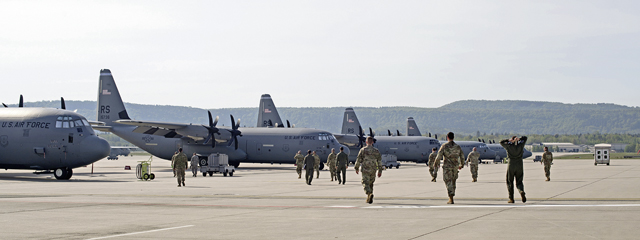
The 86th Maintenance Group leads the charge for the C-130 community in procuring ion distribution units to ensure the safety of aircrews, passengers and the Airmen working in and around the aircraft.
“Ramstein’s C-130s are the highest utilized C-130s in the entire fleet,” said 1st Lt. Thomas O’Brien, 86th Aircraft Maintenance Squadron support flight commander. “We do all types of mobility movement. It is incredible what the mission set is with these C-130s. They’re used for just about everything.”
Whether it’s supporting Army paratroopers, transporting special operators, evacuating personnel, or one of the numerous training missions with partner nations and joint partners, the C-130 answers the call.
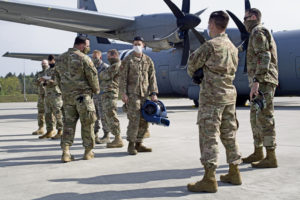
“We’re now expanding that,” O’Brien said. “Our aircraft have not yet been called upon for patient movement, but because we already maintain a very versatile mission, we want to make sure that when the call comes for the C-130s here at Ramstein, we answer immediately.”
Part of the daily routine for the maintainers of the 86th Aircraft Maintenance Squadron to ensure aircraft readiness is disinfecting before and after each mission that transports personnel. Chemicals such as isopropyl alcohol can be used to clean the aircraft, but maintainers wanted to ensure they took additional precautions during heightened health protection conditions. After conducting some online research, members found that ion distribution units might meet the requirement.
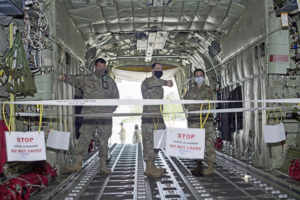
An ion distribution unit uses bipolar ionization technology to replicate nature’s cleaning process creating positive and negative ions from hydrogen and oxygen molecules in water vapor in the air. This process deactivates airborne and surface viruses and allergens.
Bipolar ionization is a process used in hospitals, medical clinics and aircraft ventilation systems for commercial airframes. This process is known to kill the bird and swine flu viruses, SARS bacteria and many other pathogens.
The 86th MXG leadership team needed help in resourcing this technology for their purposes and turned to their resource advisor, Tech. Sgt. Christopher Stoller. Stoller was tasked to research and procure necessary ion distribution units to ensure the safety of the Airmen working on the aircraft that may potentially carry COVID-19 positive patients.
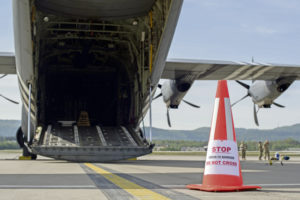
Resource advisors manage the budget for their units and secure needed items. Items costing more than $25,000 can often take three to six months for a contract to be awarded, then additional time needed for the items to be ordered and arrive on site. Equipping the 86 MXG with enough units was a $150,000 endeavor.
Stoller was approached on a Monday and, due to the nature of the request, dropped everything to start the process. Hours of market research and contacting manufactures stateside were the first steps. Stoller worked late nights with Harold Heidt and Herbert Wazulin, 86th Comptroller Squadron financial management analysts, and Tyler Groves, Evan Porter and Diane Feguer in the 700th Contracting Squadron to cut the processing time drastically. The contract was awarded the following Saturday — seven days instead of an estimated half-year turnaround time.
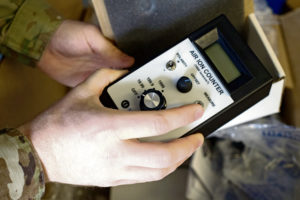
“Due to the gravity of the situation, the safety of the Airmen, and how COVID-19 is an emergency according to the federal government, we’re able to go out, identify what we need, make sure everything is legal, proper and legit and procure the items in less than a month,” Stoller said.
With ion distribution units now in hand, the 86 MXG and multiple support agencies are working together to create a seamless disinfectant process for the C-130J. Once the aircraft lands and is cleared by the medical group, the maintainers go on to disinfect the aircraft. Disinfecting the aircraft is a two-part process. The first measure is to treat the air with ion distribution units. After the units run, maintainers return to accomplish a surface disinfectant.
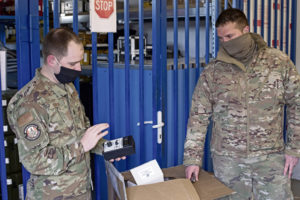
“Utilizing that two-pronged process of attacking your airborne threat and then your surface threat,” O’Brien said. “That is how we achieve the overall operation of disinfecting our aircraft.”
Biomedical engineers ensure the disinfectant process is done correctly, before the aircraft is cleared for flight. The entire process, from start to finish, takes under three hours and provides added reassurance to all Airmen involved that their welfare is a main priority.
“We are willing to do whatever it is to make sure they (Airmen) are safe,” said Lt. Col Michael Thompson, 86th MXG deputy commander.


